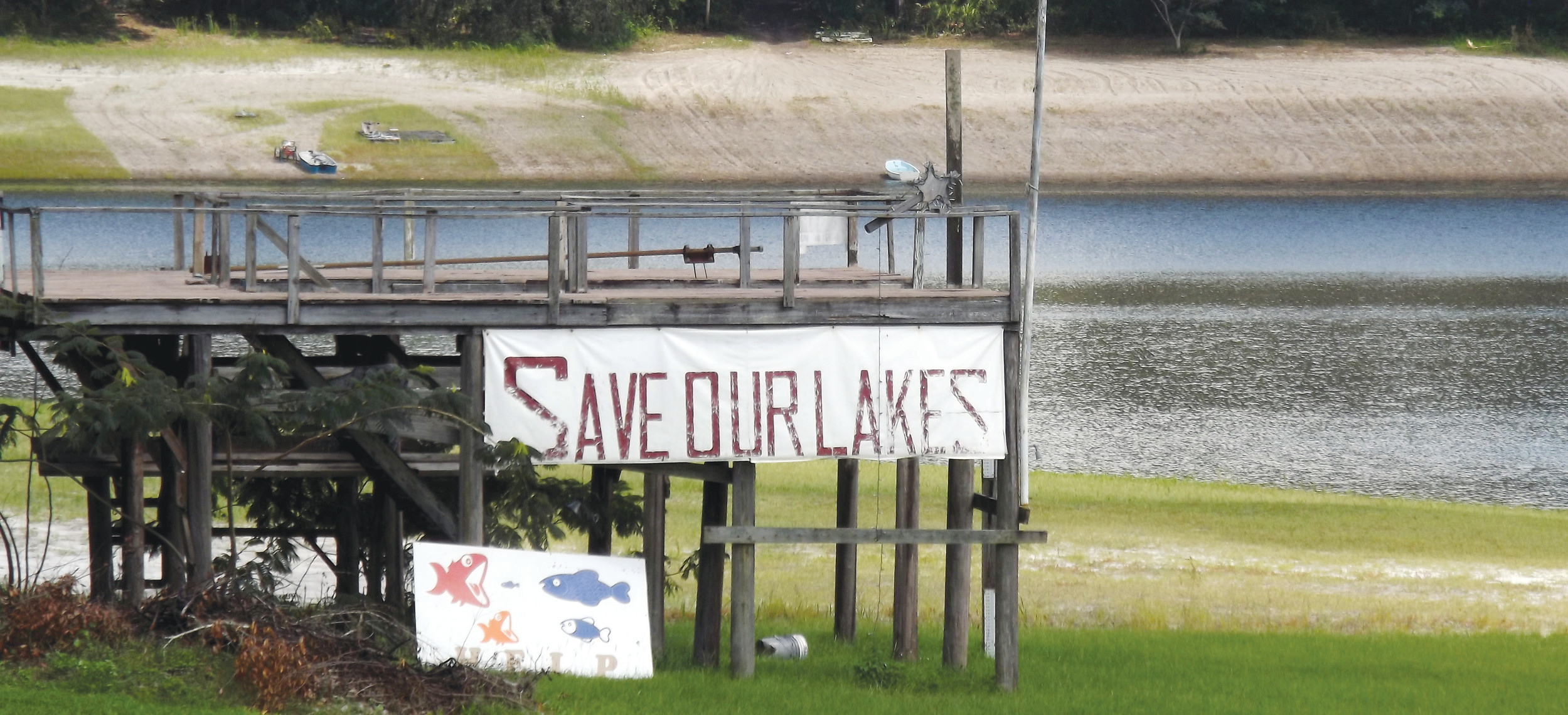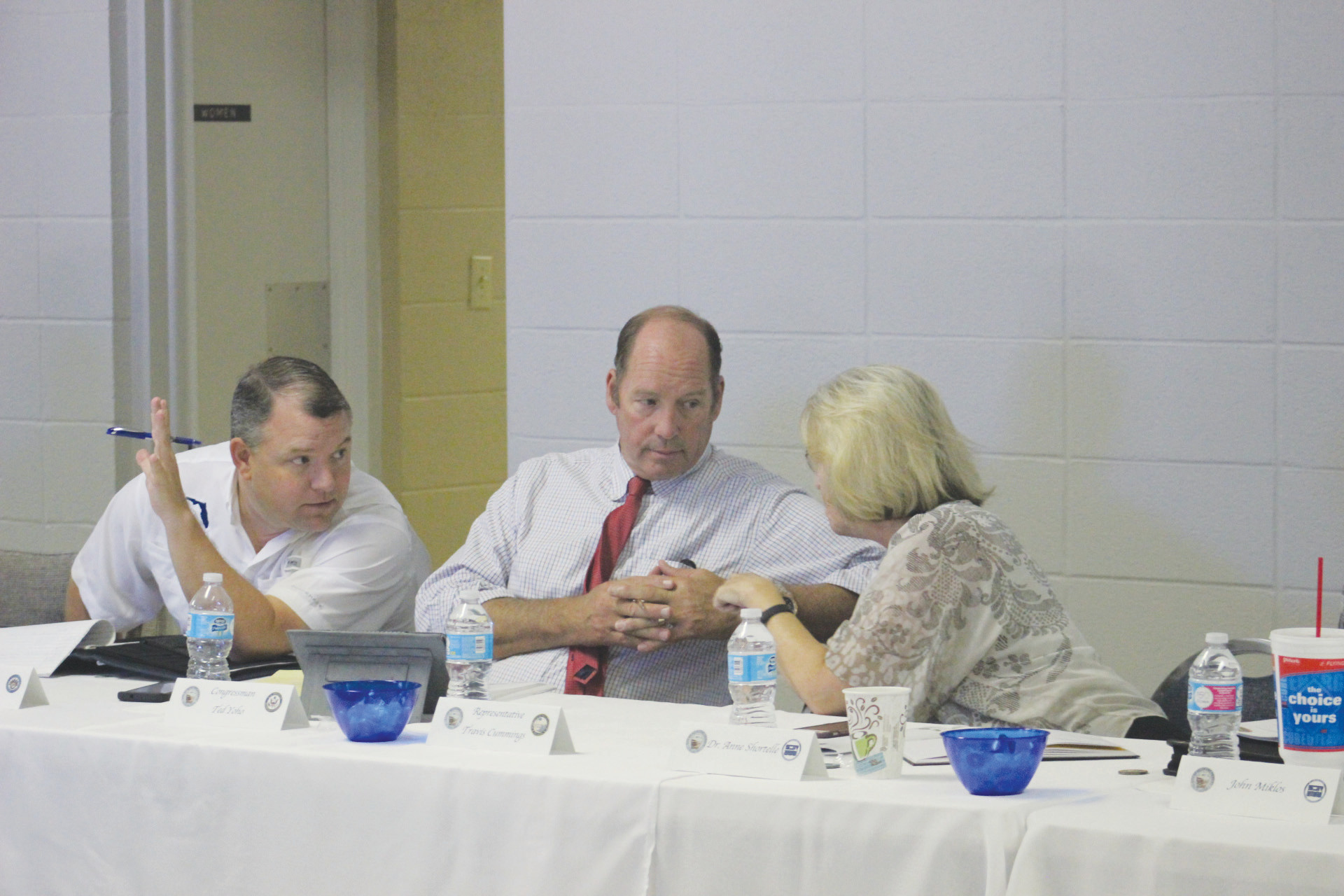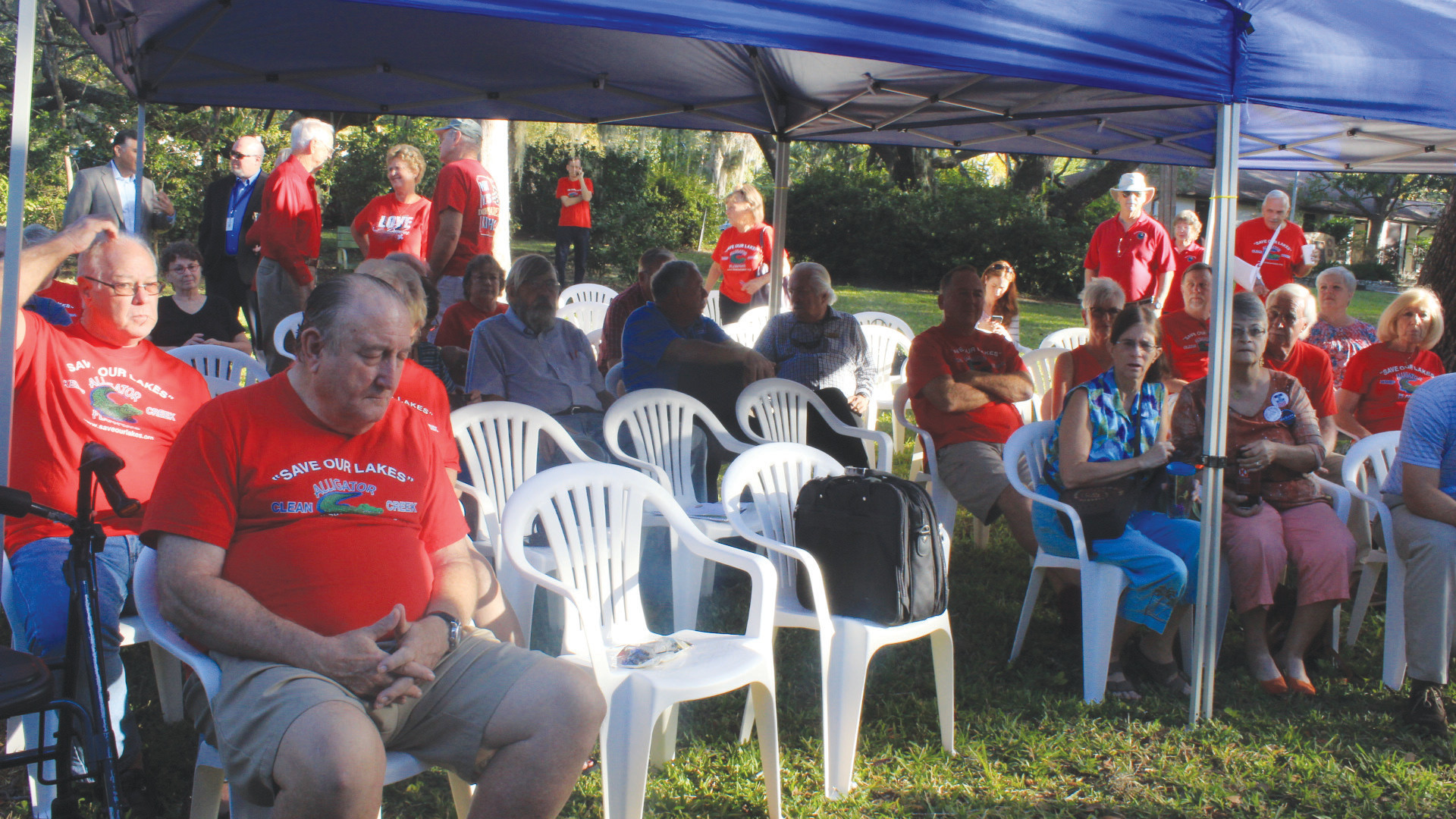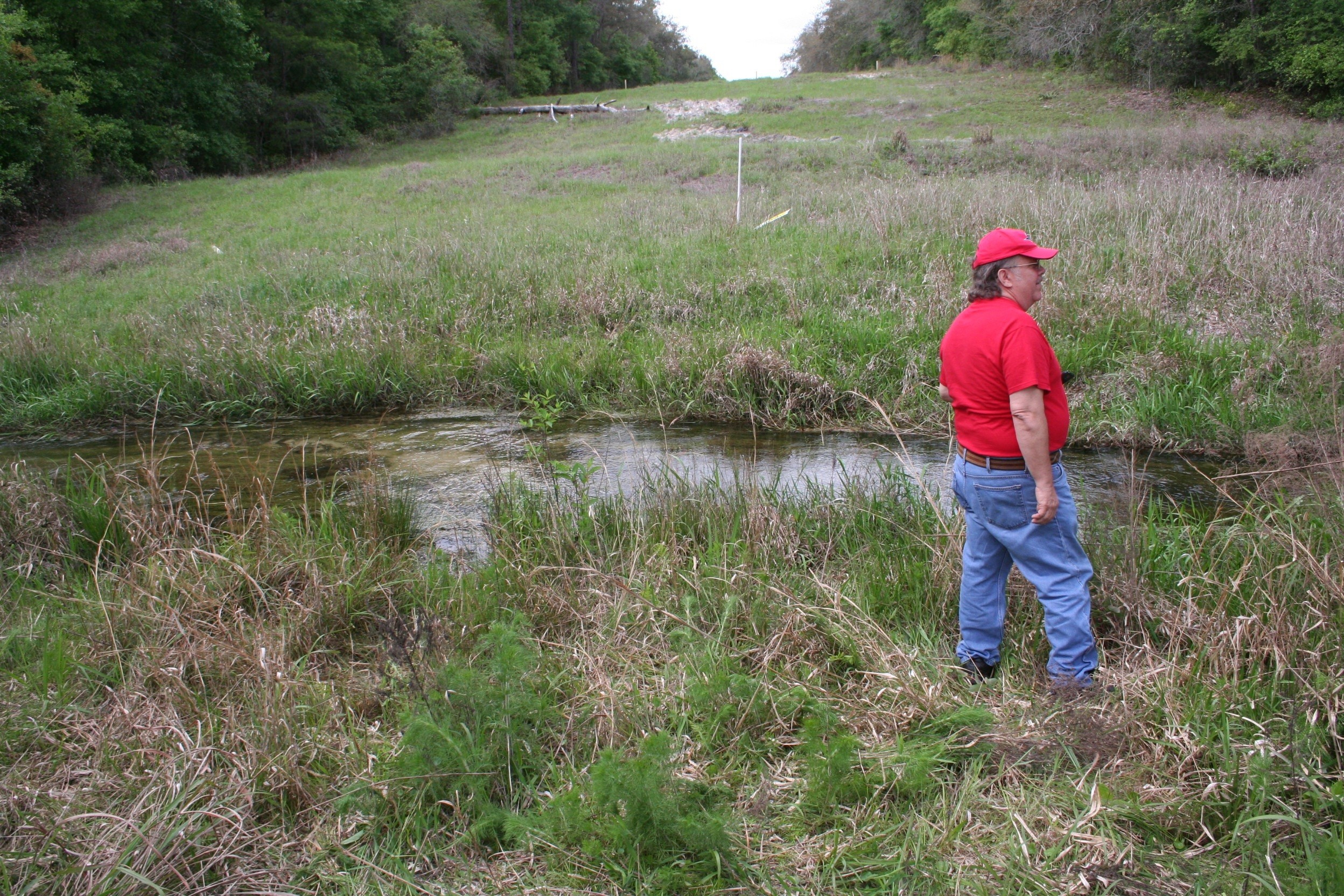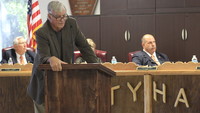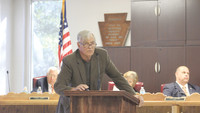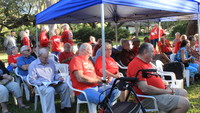Water conservation stakeholder committee forming in Keystone
KEYSTONE HEIGHTS – The Keystone Heights City Council and other entities have begun to arrange key stakeholders for a committee dedicated to the creation and vetting of water conservation methods …
This item is available in full to subscribers.
Attention subscribers
To continue reading, you will need to either log in to your subscriber account, or purchase a new subscription.
If you are a current print subscriber, you can set up a free website account and connect your subscription to it by clicking here.
If you are a digital subscriber with an active, online-only subscription then you already have an account here. Just reset your password if you've not yet logged in to your account on this new site.
Otherwise, click here to view your options for subscribing.
Please log in to continueDon't have an ID?Print subscribersIf you're a print subscriber, but do not yet have an online account, click here to create one. Non-subscribersClick here to see your options for subscribing. Single day passYou also have the option of purchasing 24 hours of access, for $1.00. Click here to purchase a single day pass. |
Water conservation stakeholder committee forming in Keystone
KEYSTONE HEIGHTS – The Keystone Heights City Council and other entities have begun to arrange key stakeholders for a committee dedicated to the creation and vetting of water conservation methods for the Upper Floridan Aquifer.
Legislative leaders and water conservation experts joined city and county officials along with concerned citizens Tuesday in the Keystone Heights City Hall to discuss how to abate the growing issues with low water levels in Keystone lakes and other exhausted water bodies in the region.
Despite a few concrete plans and concepts from the Save Our Lakes Organization, the largest advocates for the weakened Keystone Heights lakes, none of the representatives in the room Tuesday were ready to move forward with any plan, citing the burdens of cost and unreliability of SOLOs unvetted concepts.
It was a consensus that a committee of key representatives from county, municipal and water management districts would provide a better sense of accountability for SOLOs projects as well as assist in the creation of new projects.
However, a basic fact hung in the minds of those in the room and the close to 60 people sitting in chairs outside the hall – something needed to be done.
“This city council that sits before you today is a team,” said Mayor Tony Brown. “Ever since we’ve had this team, water is our issue. Living here all my life, my kids didn’t have the benefit of seeing our Keystone Beach or our Lake Brooklyn.”
Keystone Heights beach, essentially the shore of Lake Geneva, dried up five years ago. When it did, the shopping district on South Lawrence Boulevard lost a core set of customers coming from Gainesville and other surrounding areas to enjoy the locale.
For decades, water levels have fluctuated in the Etonia Chain of lakes that incorporate Lake Geneva and Lake Brooklyn. The flows in these lakes are mostly dependent on rainfall. The lakes are also a major recharge area for the Floridan aquifer.
In a report by Tampa based Senior Hydrogeologist Peter Schreuder, he argues that pumping from the aquifer has caused a significant enough decrease in the aquifer to affect both lakes.
“Imagine a bathtub,” Schreuder said. “Now imagine the bathtub is overflowing over the top. People start to dip their cups into the bathtub to drink, to sell to people, for agriculture – and that level starts to get lower and lower. The showerhead was putting water in the bathtub, but now we’re taking more cups out than the showerhead, which is the rain, can put in.”
In 2001, Schreuder worked with the St. Johns River Water Management District and then District 19 Florida House of Representatives member Joe Pickens to help evaluate the problems in Lake Geneva where it was believed mining operations had reduced the flow of the lakes.
One of the many strategies outlined in Schreuder’s report was to store water on Camp Blanding property and use fine sands created from the old DuPont mining operation to filter the water. From there the water can flow into the Etonia Chain or even into the Sante Fe Wetlands for the Suwanee River.
“It breaks my heart when I drive over that bridge and see the water...but that all being said I can care about it and it can be personal but what I see is a lot of people who’ve heard a lot of words and want action,” said Senator Rob Bradley. “The reality that we work in is that there are a lot of stakeholders…I’m committed to have actionable items that are included to make this thing move forward, but understand that our laws are built so that these things have to be vetted, there’s a difference between concepts and actionable items. Now we need scientists and engineers to bring pencil to paper and bring me a project.”
“We want to walk out of this room with a project to move forward,” said Vivian Katz, SOLO president. We’re giving you something to move forward on – we’ve got to have this, this community has to have this. I feel like Save Our Lakes has reached a point – we’ve given you everything we can give you, but we’re limited as a nonprofit organization. We need your help. You see the community, you see the damage that’s been done.”
However, SOLO has proposed other projects that were shot down that could have rehydrated the ailing lakes.
The Alligator Creek Enhancement Strategy involved installing a pipeline in Lowry Lake located on Camp Blanding property to drain water down into Alligator Creek and through the Etonia Chain of Lakes.
The water could have then flowed into Lake Geneva and Lake Brooklyn, rehydrating them and restoring the lost property value for homes circumventing the lakes.
SJRWMD allocated $250,000 in funding for the ACES project. Katz suggested the money could go to funding future projects.
The City of Keystone Heights budgets $10,000 a year solely for the restoration of the lakes. The city also gets $40,000 annually from the county. Katz suggested that money could also accumulate and pay for a civil engineer to vet the plans. Katz then suggested SJRWMD could place a request for proposal out using the money accumulated to find a qualified civil engineer.
Because SJRWMD projects are co-funded, representatives from the water district batted away Katz’ ideas primarily because no one else in the audience spoke up to show their financial support.
“In our process, we co-fund construction, so you have to have the applicant bring the designed and permitted project, or something that is moving positively towards that,” said SJRWMD Executive Director Ann Shortelle, who has a doctorate degree in limnology from the University of Notre Dame. “That’s sort of where we’re stuck, so I understand that, but we’re not setup to take that on for our 18 counties.”
With so many movers and shakers in one room, there was a surprising amount of stagnation in identifying measurable steps to solve issues that, for many in Keystone, lie right in their backyards.
Among many reasons, the chief reason seemed to be Schreuder’s ideas did not include a concrete price for the buildout of his suggestions.
Although a committee doesn’t exactly qualify as a project, it will help to one day identify and vet a project which, if enough funding trades hands, could remedy the lakes.
If a project does move forward, representatives from Camp Blanding said they would do everything they could to support the projects and rehydrate the lakes as long as its waterborne training exercises are not inhibited in anyway.


